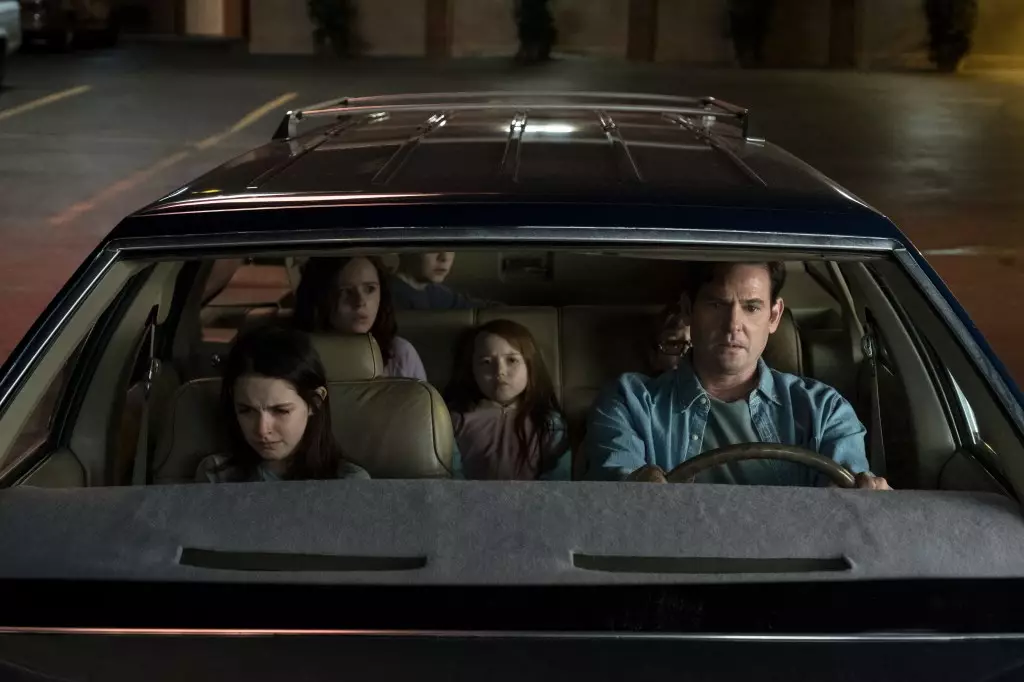Mike Flanagan, the acclaimed director known for his groundbreaking work in the horror genre, has boldly articulated the profound emotional undercurrents that fuel his creative pursuits. His recent statements at the SXSW London event, where he unveiled his latest project, “The Life of Chuck,” have unveiled a deeply personal exploration of grief—a theme that resonates throughout his oeuvre. Flanagan does not shy away from discussing how the tragic loss of a family member, particularly a suicide, served as a catalyst for the creation of “The Haunting of Hill House.” That series becomes more than just a tale of terror; it morphs into a raw, emotive landscape that mirrors his dreams and nightmares. Through this creation, he seeks healing and hopes to extend that healing to anyone who wanders through similar valleys of despair.
Flanagan’s openness about using creative expression to cope with unresolved grief is both powerful and vital in a world that often stigmatizes vulnerability. In an epoch where mental health awareness is gaining traction, his testimony underscores the idea that art, particularly horror, can serve as a refuge—not merely providing scares but also addressing profound human experiences like loss and trauma. “I’m going to be dealing with it forever,” he states, capturing the unending nature of grief, while simultaneously showcasing how artistic expression can serve as a lifeline amidst the perils of enduring sorrow.
The Artistic Complexity of Horror
Flanagan’s views on horror challenge the conventional perceptions often held both by audiences and industry gatekeepers. He articulates a powerful critique of the ongoing “bias against horror,” highlighting a frustrating cycle where the genre is undervalued despite its undeniable depth and breadth. Each time a groundbreaking project emerges—like Jordan Peele’s critically lauded works—the narrative momentarily shifts, yet audiences are swiftly reminded that horror is not synonymous with mindless scares. In Flanagan’s view, horror possesses the potential to weave intricate narratives that delve into the human condition, challenging the reductive notion that it is merely a vessel for frights.
By advocating for horror as a legitimate genre—one rich in storytelling capability—Flanagan pushes against the myopic lens through which society often views it. “People outside the genre remain perpetually surprised,” he remarks, emphasizing a cycle of astonishment that borders on ignorance. It is a disheartening reality that the artistic merits of horror are frequently overlooked, a point that Flanagan poignantly articulates in his discussions surrounding his adaptations of Stephen King’s work.
The Human Element in Horror
In discussing his collaborative relationship with Stephen King, Flanagan reveals a thought-provoking perspective: King, often labeled a horror writer, transcends the confines of the genre through his deeply humanistic storytelling. Flanagan’s depiction of King as a “gooey-hearted, lovely humanist” underscores the emotional richness that is often overshadowed by the superficial categorization of horror. He identifies the core of King’s narrative craft as the exploration of human connections, positing that the horror elements arise naturally from these relatable themes.
This assertion elevates horror from being a mere entertainment vessel to a profound examination of life, love, and loss. In his reflection on King’s novel “It,” Flanagan’s realization that the story is fundamentally about “kids and friendship” rather than merely a “shapeshifting clown” serves as a powerful reminder of the depth embedded in horror narratives. It prompts audiences and creators alike to reconsider the intrinsic value and multidimensionality that great horror can embody.
The Future of Storytelling
One of Flanagan’s more impassioned arguments at SXSW revolved around the sanctity of monologues in film. As the art of the monologue risks dilution amid the evolving demands of streaming platforms, Flanagan’s advocacy for their relevance is compelling. His belief in the transformative power of language—where an actor can alter reality with mere words—brings forth a sense of urgency to preserve this potent craft. Studios often press for brevity, yet herein lies the tension: how do we balance the need for compelling storytelling with the reductionist demands of modern media?
Flanagan’s perspective opens a dialogue about artistic integrity in an era dominated by streaming metrics and quick consumption. It raises essential questions about the nature of storytelling and how we, as a society, access and value narrative art. The challenges posed by the streaming age are profound, yet it is voices like Flanagan’s that remind us of the power behind authenticity and the dense emotional tapestries that can be woven through thoughtful discourse and nuanced storytelling.


Leave a Reply